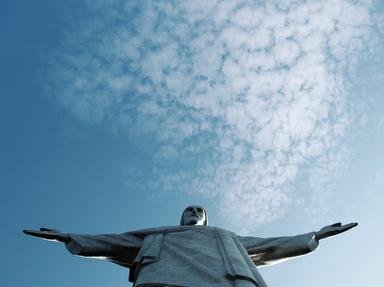Quiz Answer Key and Fun Facts
1. Which of the following countries did Bolivar NOT directly contribute to freeing from Spanish control?
2. Bolivar's ideas as a child were very liberal for the times, even though he was the son of a very rich, conservative ranching man. So, who is credited with teaching Bolivar these liberal ideas?
3. In 1802, Bolivar married his one true love, Maria Teresa, whom he met in Europe. Who was she?
4. On July 5th, 1811 (one day later than intended) Venezuela became the first Spanish possession to declare its independence. What prevented Venezuela from maintaining its independence at the time?
5. From Colombia, in command of a small army, Bolivar began his "Admirable Campaign", in which he initially freed Mompox, a river city, and then moved on to regain Caracas. He struggled in skirmishes and battles with Royalists and outlaws, who were led by the villainous Jose Tomas Boves, until he was defeated again in 1815. He fled once more. This time he ultimately ended up in the only other independent country in the Americas at the time besides the U.S.A.. What country was this?
6. According to historical legend, how did Bolivar's enemy, Jose Tomas Boves die?
7. After establishing Angostura as the "new" capital of Venezuela, enlarging his army with British soldiers, and fighting several skirmishes, Bolivar made a supreme tactical decision which eventually led to his most decisive victories. What was that decision?
8. In 1820, after finding out that there would be no new reinformcements sent from Spain, the Spanish General Morillo was forced to sign an armistice with Bolivar and Gran Colombia was recognized officially as a soveriegn state. Bolivar still had to free Venezuela from the Spanish army and had plans to move on to Ecuador and Peru, so he left behind one of his great generals to govern. Who was it?
9. On December 17, 1830, Bolivar finally submitted to the tuberculosis that had plagued him all his life. What was his standing with the confederacy of Gran Colombia at the time of his death?
10. While freeing almost all of South America from the Spanish, Bolivar would only allow one title to be attached to his name. What was the title?
Source: Author
confuszius
This quiz was reviewed by FunTrivia editor
bloomsby before going online.
Any errors found in FunTrivia content are routinely corrected through our feedback system.

